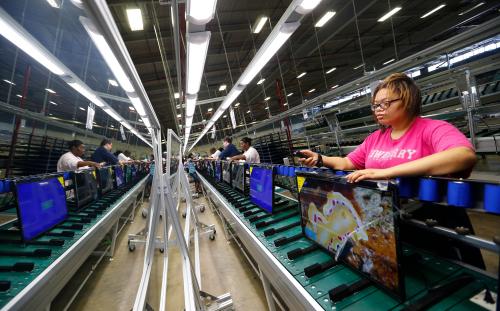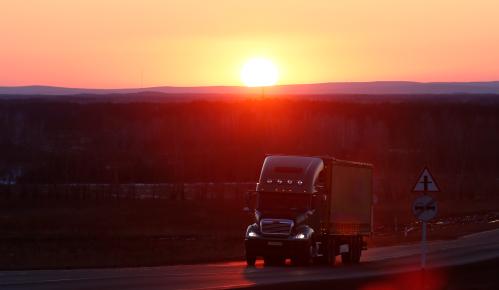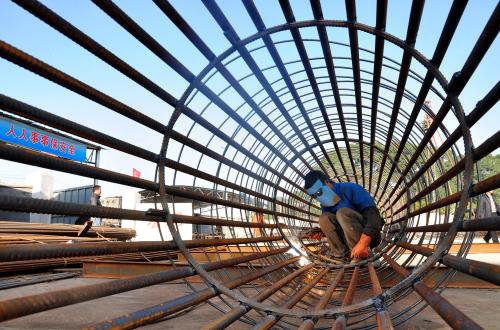This article originally appeared on Real Clear Markets on May 2, 2017.
We could soon be living in a world in which driverless vehicles or drones make all deliveries. Those vans and big rigs on the interstates will barrel along to their destinations without drivers; the groceries or prepared food you need for dinner or the prescription your doctor ordered will descend on your doorstep without a human delivery person in sight.
Driverless deliveries are a good example of a radical technological change likely to take over very soon. We are not talking science fiction here. Amazon has recently announced that it is focusing on driverless technology to improve its deliveries, and is already trying out drone deliveries. Waymo, Google’s self-driving technology company, has invited riders to participate in the first public self-driving trial in Phoenix, Arizona. Uber’s autonomous truck, Otto, has made long-distance deliveries in Ohio.
The transition to driverless deliveries will be a bonanza for early investors in the winning technologies. A wide range of consumers and businesses will benefit from cheaper, faster, more reliable delivery of things they buy or parts they need. In the end, most Americans stand to benefit from a higher productivity economy. However, in the near term, the consequences could be devastating for delivery drivers and their families and owners of the soon to be old-fashioned vehicles that require drivers. Policy makers should be preparing now to respond to this technological revolution, so that we can benefit from the new technology, but mitigate the damage to those who lose out.
Unlike the fraught issue of declining manufacturing jobs, in which technological change and global trade expansion both play a role, displacement of delivery drivers is a pure example of the impact of technology on employment. The technology is home grown, and the jobs would simply disappear, not move to another country. We can’t blame the Chinese or the Mexicans.
If driverless deliveries prove faster, cheaper, safer, and more accurate, they would likely be adopted quickly and affect all parts of the country. Truck driving is much less concentrated in particular areas than, say, coal mining or steel making.
In 2016, there were 1.7 million heavy and tractor-trailer truck drivers, with a median annual wage of $43,590; 859 hundred thousand light-truck and delivery workers, who earned $34,700; and 426 hundred thousand driver/sales workers, who earned $28,449. So a rough estimate would be that driverless deliveries would put at least 2.5 million drivers out of work, not counting drivers’ helpers and a substantial number of workers in truck stops and roadside services patronized by truckers. Truck drivers drink a lot of coffee.
Like many lost manufacturing jobs, truck driving requires skill, some special training, hard work, and fortitude, but not much formal education. If you did not go beyond high school, but are a reliable, safe driver—especially if you are willing to work the demanding schedules of long-haul truckers—you can support a family and have decent benefits by driving a truck.
The transition to driverless deliveries would also create some new jobs, many of them technical jobs involving software development and programming that would command relatively high wages. Vehicle maintenance jobs would still be necessary, and would likely require enhanced electronic skills with higher pay than current truck maintenance jobs. Expanded demand for the cheaper delivered products would likely create additional jobs in the transportation sector. It is impossible to predict the ultimate effects of any major technological change, but in the short run it is a good bet that a lot of former drivers would be looking for work and finding their skills and experience ill-suited to available jobs at comparable wages.
The United States does not have a good record of constructive policy response to technological unemployment. The reaper, the railroads, the automobile, the computer, the smart phone all created vast fortunes, remarkable consumer benefits, and tough times for a lot of displaced workers. But as long as the economy was growing and new jobs were being created (although not necessarily in the same places or for the same people), policy-makers didn’t worry much about the displaced workers.
In recent decades, unemployment compensation helped ease the transition and retraining programs were sometimes available, although not always effective. For political reasons, workers who could prove displacement by trade, rather than technology, got more help, although they were not obviously more worthy than those displaced by technology or shifts in demand.
A possible policy response is delaying the consequences of the technological revolution as long as possible. For example, diesel railroad engines were required to carry firemen long after there was no coal to be shoveled. This type of response, called “feather-bedding,” only postpones the inevitable transition. Trucks could be required to have a driver on board at all times, for “safety” reason, but if that person proved genuinely superfluous, their employment would not last long.
America’s failure to pay serious attention to those left behind by technological change is arguably responsible for much of the public outrage on both right and left that erupted in the 2016 election. The moral and political consequences of that neglect are evident in tales of former steel mill or assembly line workers flipping burgers for a fraction of their previous wage, worrying about how to pay for health care and whether their children will lose their chance to move into the middle class.
The transition to driverless trucks presents an opportunity to respond more effectively to technological displacement and get a jump on the larger technological revolution looming ahead, in which many more jobs that require physical effort (and many that don’t) are likely to be done by smart machines.
Actually, displaced drivers are not a particularly difficult challenge if their plight is faced promptly. They have proven work records, are relatively healthy or they could not keep driving, and are not a substantial fraction of the workforce in any one place. The response could include an early retirement option for older truckers for whom learning new skills might not be a viable option, plus a focused education, training and job mentoring program for truckers under, say, age 50, who can direct their energies into new careers.
Critics would object that truck drivers are getting special treatment and more resources invested in their future than displaced workers have in the past. They would be right, but we have to start coping more effectively with technological displacement or we will end up with an even larger fraction of the population feeling angry and betrayed because society has left them behind. The drivers are a politically appealing group. They did not make bad choices; they took needed jobs and worked hard, but this astonishing new technology did them in. Senators Susan Collins (R-Maine) and Jack Reed (D-Rhode Island), the chair and ranking member of the Transportation Subcommittee of The Senate Appropriations Committee, recently held a hearing on the subject and called for a GAO study of the impact self-driving trucks could have on commercial truck drivers.
If the enthusiasts of smart machines are right, the truck drivers are just a small fraction of the workers soon to be displaced by a new wave of technological advance. Americans will be forced to face up to the daunting challenge of what we want our society to be like when we no longer have to do hard boring jobs like driving a truck. We have to figure out new ways of developing and adequately rewarding the skills that only humans have, like empathizing, nurturing, motivating, and fostering athletic skills and artistic creativity. That is the particular challenge posed by smart machines. There are no easy answers to this challenge, but focusing on the soon-to-be-displaced truck drivers is a good place to start.
The Brookings Institution is committed to quality, independence, and impact.
We are supported by a diverse array of funders. In line with our values and policies, each Brookings publication represents the sole views of its author(s).







Commentary
Op-edSeeking a policy response to the robot takeover
May 2, 2017